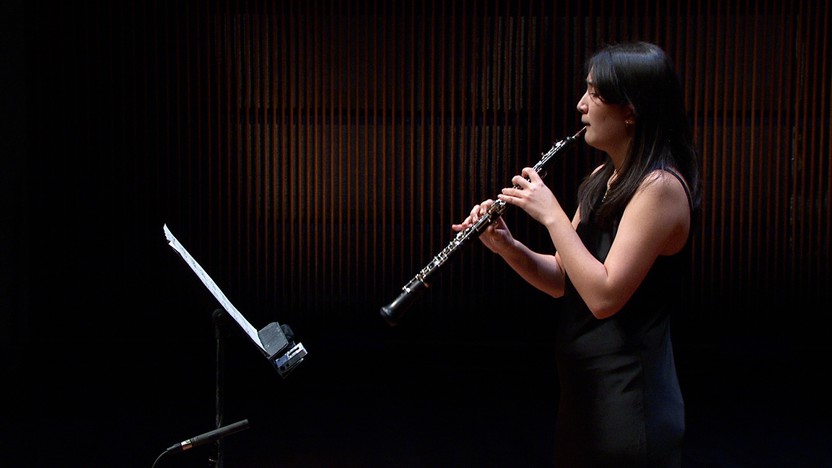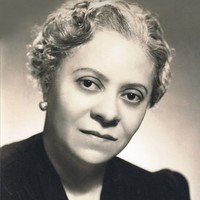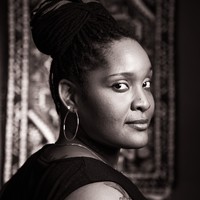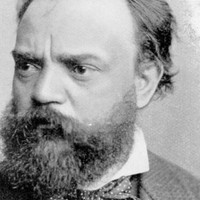Sounds From Home



My solo oboe work Elegy is commissioned by The Saint Paul Chamber Orchestra for its principal oboist Cassie Pilgrim who premiered the work at the Ordway Concert Hall in St. Paul, MN in November 2020. Since Cassie and I share the same cultural heritage from Southern China, my oboe solo piece written for her has strong influence from Cantonese folk music material, with the folk tunes in Yifan Mode, which sounds sad and sentimental. The solo piece expresses our deep nostalgia for our loved ones, as well as our painful mourning for thousands of people who lost their lives during the COVID-19 pandemic around the world.
Chen Yi ©2020

At a time when America’s elite musical circles were essentially closed to women, let alone women of color, the African American composer and pianist Florence Price asserted her place in classical music with an array of masterfully crafted scores that are only just now earning the mainstream recognition they deserve. Building on her studies at the New England Conservatory of Music, Price developed a compositional voice steeped in her cultural experience, informed by the racial tension in her hometown of Little Rock and her time in the creative hotbed of Chicago during the Great Migration. With the premiere of Price’s First Symphony in 1933, the Chicago Symphony became the first major orchestra to perform a work by an African American woman.
Price’s most celebrated compositions merged the standard forms and ensembles of classical music with musical material rooted in African American culture. That endeavor continued a path popularized in the 1890s by the Czech visitor Antonín Dvořák, who famously tried his own hand at weaving tropes from spirituals and Native American music into his Symphony No. 9, From the New World, composed while he was directing a music school in New York. He also trained leading Black composers including Will Marion Cook and Harry Burleigh, who made their marks in music theater and art song, respectively. A generation later, Price brought similar musical elements squarely back into the concert hall, like when she placed a Juba Dance in her breakthrough First Symphony instead of a typical scherzo—a pattern she repeated in her String Quartet No. 2 from 1935 (and many other works that followed a traditional four-movement structure).
A letter Price wrote to a conductor in 1943 speaks to the personal way she used these cultural markers to forge the “new, independent art” that Dvořák affirmed when he arrived in America to help train Price’s forebears. “No attempt,” she wrote, “has been made to project Negro music solely in the purely traditional manner. None of the themes are adaptations or derivations of folk songs. The intention behind the writing of this work was a not too deliberate attempt to picture a cross-section of present-day Negro life and thought with its heritage of that which is past, paralleled or influenced by contacts of the present day.”
The Juba third movement makes the most explicit nod to Black folkloric culture, but even that reference needs to be placed within a broader context of appropriation and racism in popular music. The name, besides being the largest city in what is now South Sudan, came from a dance style full of slapping, stomping and other body percussion—a tradition developed by people enslaved in the American South, with roots in African dance. By Price’s lifetime, such sources had gone through generations of assimilation into popular culture, starting with performances in the racist minstrel shows of the mid-nineteenth century, first by white performers in blackface, and later by Black performers who also appeared in blackface. Minstrelsy gave rise to popular styles like cakewalk and ragtime, pioneered by Black composers including Will Marion Cook and Scott Joplin, and it was this musical tradition that most directly fueled Price’s playfully syncopated quartet movement.
Aaron Grad ©2021

Ragtime is a complex hybrid of African American dance tunes filtered through the procedures of the polka, march and minstrel song. Classic ragtime flourished from 1895 to 1915; the focal point was St. Louis, where a number of itinerant pianists gathered for "cutting" contests at the famed Rosebud Cafe. The genius of this bunch was Scott Joplin, in my opinion, one of America's true musical poets. Inspired by the Joplin revival of the 1970s and 80s, I began writing my own piano rags, penning maybe fifteen or twenty in my late teens and early 20s. In addition to the classic ragtimers, I found inspiration in the great Harlem stride pianist James P. Johnson.
Rag Set for string quartet is based on a few of my earlier piano pieces, though the material is considerably transformed and expanded. These string settings exhibit additional influences, including country fiddling, burlesque/music hall and the classical showpiece. Rag Set was originally commissioned by the Hanson institute for American Music of the Eastman School of Music at the University of Rochester and was dedicated to the Ying Quartet.
John Novacek ©2020

The chôro is a Brazilian form of popular music that is characterized by virtuosic passages and improvisation. The opening notes of the piece contain the notes A B E Eb, which are somewhat related to my colleague's name; Anita Thesen (A), B (TH), E, S (Eb). The initial passages of the piece include a simple ascending gesture which represents a desire to rise above adversity. Then I developed this melody almost organically in a quasi-improvisational manner. The opening gesture is supposed to be a sort of noble and respectful melody in which one would cry (Chôro = “I cry” in Portuguese) but not necessarily from a place of darkness or heavy sadness.
James Lee lll ©2020

Brown as the Earth. Bright as the Sun. Her beautiful smile touched everyone. I honor you with these words of my song.
Her name was Zula Young.
I am so proud and humbled to bring you “Save a Place For Me,” an excerpt from A Requiem for Zula. To be playing a piece that speaks of my mother's life and legacy is amazing. And this is something as a musician that I have always dreamed of doing…composing and creating sound for an orchestra.
This piece encompassed what I knew of my mother's life...focusing on the way she made me feel, the way she touched anyone on her life's path, and honors her passing in February of 2011. The colors and warmth that come to mind when I think of her. I feel like this piece wrote itself. I opened up, and it flowed out...and in my mind that means, it's meant to be. It was a rite of passage, crafting the music and lyrics.
I just commemorated the 10th anniversary of my father Paul French’s passing, and my family and I are approaching the 10th anniversary of my Mother’s transition as well… “Save a Place For Me” describes how I am keeping the faith in hopes that I will again meet them both, one day. I was 25/26 years old when they left us, and I hadn’t yet begun composing. I can only hope they can hear these melodies I create, on the other side.
As we are in a time of pandemic, racial unrest, prevalent injustice and the overall hardships that so many of us face daily, I am blessed to be able to receive opportunities to use my voice and art to speak to both the light and the darkness we are journeying through right now. I chose “Save a Place For Me” because I wanted to share my optimism that we will push forward, and we, as artists and people overall, will persevere. We will be able to come together again. We will be able to evolve if we are willing to do the inner work of ourselves through this difficult time. And please save a place for us artists in your hearts and minds because we will be back to doing what we love for the people, for you, for us.
I am thankful for all of you who have wished me well in this journey and beyond.
PaviElle French ©2020

Antonín Dvořák came from a small Bohemian village, where his zither-playing father was the local butcher and innkeeper. His first big hit was a set of Slavonic Dances that drew upon Czech folk music, and even a steady stream of masterful symphonies and chamber music scores in the Beethoven-Brahms tradition hardly dispelled the notion that he was a provincial composer. While his embrace of that local cultural identity cost him credibility within the German-speaking world, he found appreciative audiences further afield. In the 1880s, a series of visits to London made him a local hero, and in the next decade he made an even bigger impact in the New World.
The job that lured Dvořák away from his beloved homeland was an offer to direct the National Conservatory in New York. When he accepted in 1892, he understood that his position involved more than running a music school. He wrote to a Czech friend, “The Americans expect great things of me. I am to show them the way into the Promised Land, the realm of a new, independent art, in short a national style of music!”
Besides teaching American composers and supporting them in their efforts to bring local inspiration into their music, Dvořák incorporated “American” sounds into his own compositions from the time. After finishing the Symphony No. 9 (“From the New World”) in May of 1893, he took his family into the heartland for an extended summer vacation in Spillville, Iowa, a small farming town populated mainly by Czech immigrants. While there he composed this String Quartet in F Major and the String Quintet in E-flat Major, which were published sequentially as Opuses 96 and 97, and which share the American nickname.
Dvořák recognized Native American and African American traditions as the two main sources that could provide the authentic roots of an “American” school of composition. His understanding of Indian culture was mostly indirect, gleaned from his reading of Longfellow’s epic poem The Song of Hiawatha (1855) and from melodies that appeared in heavily edited songbooks published by Eurocentric scholars. (Dvořák did apparently encounter members of the Iroquois tribe that summer in Spillville, and he was thrilled to hear their songs and drumming firsthand.) He had the benefit of more direct contact with African American music through a student at the conservatory, Harry Burleigh, a singer and composer who introduced Dvořák to spirituals passed down from his grandfather, who had been formerly enslaved.
Spirituals and Native songs shared a reliance on a collection of tones known as the pentatonic mode, a hallmark of many folk music styles around the world (including Czech folksongs). The quartet’s opening melody, starting with a cheerful presentation by the viola, makes artful use of that pentatonic sound. The Largo movement leans into the mournful model of spirituals, showing another facet of that same pentatonic pattern, and the fiddle-like tunes of the third movement bring out yet another facet of the same basic material. The unifying presence of the pentatonic mode continues into the finale, supported here by drum-like rhythmic figures that might have owed something to Dvořák’s contact with authentic Native drumming.
Aaron Grad ©2021
Get driving directions and find nearby parking.
Find dining options close to the venue.
View seating charts to find out where you'll be seating.
SPCO concerts are made possible by audience contributions.
For exclusive discounts, behind-the-scenes info, and more:
Sign up for our email club!
